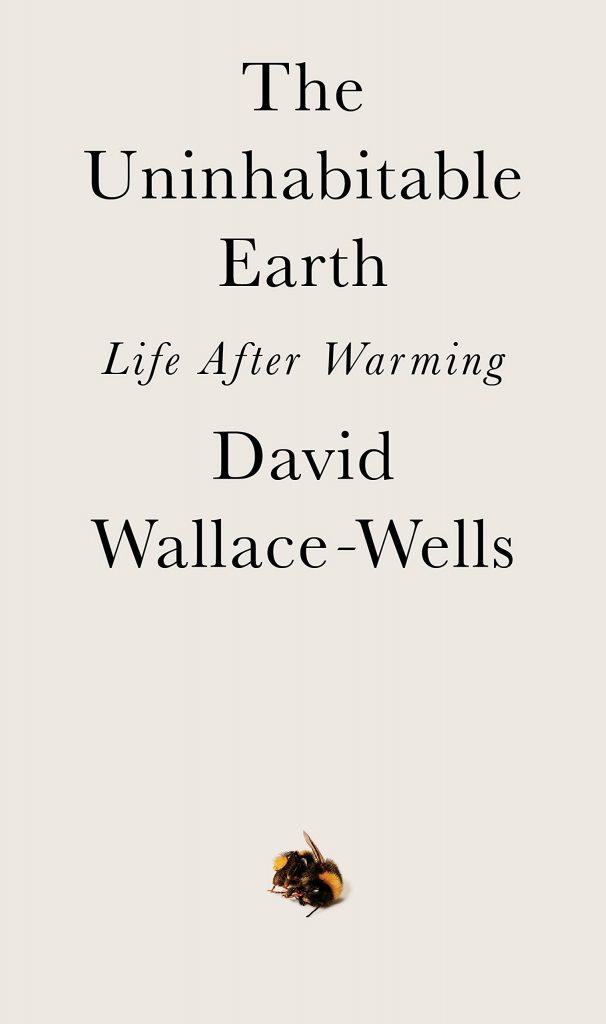As a reoccurring feature on the Sustainability Roundtable blog, we will post reviews of books related to sustainability. Interested in submitting your own review to the blog? Contact August at aolundsmith@gmail.com.

The Uninhabitable Earth: Life After Warming by David Wallace-Wells
Book Review by Kacper Jarecki
It’s easy to take things for granted – and possibly the biggest thing we take for granted is planet Earth. This non-fiction book is a real eye-opener because it shows us that Earth as we know it, may not be around for much longer. During this time of the pandemic, we are already experiencing and adjusting to new realities of everyday life. However, according to David Wallace-Wells, this might just be a walk in the park compared with what’s to come.
This book does not pull any punches, David Wallace-Wells does not spare us one bit, starting with the title itself. In the first page he writes about the 5 mass extinctions that have already occurred on this planet. I didn’t know there were that many, I only knew about the dinosaurs! A few pages later on page 6, he writes, “whole regions of Africa and Australia and the United States, parts of South America north of Patagonia, and Asia, south of Siberia would be rendered uninhabitable by direct heat, desertification, and flooding” by the year 2100 if the global temperature rises by 4 degrees Celsius. That there may be 200 million climate refugees by 2050. That conflict and warfare between countries could double as countries strive to gain access to more and more limited resources.
David Wallace-Wells writes that instead of dominating Earth, we are actually arming it through pollution, and turning it into an “angry beast” or even “war machine.” David Wallace-Wells even debates whether it is moral to reproduce and have children in this climate where so many things can go wrong. He decides to have hope and he does have a child, named Rocca. Fortunately, we still have a small level of control over what happens. He writes on page 30, “Each of us imposes some suffering on our future selves every time we flip on a light switch, buy a plane ticket, or fail to vote.” He cites ways cities in the future will compete to be greener (since they will have no choice), like banning cars, and having local vertical farms so food won’t have far to travel.
Most of this book describes the multiple horrible ways that global warming will affect Earth including droughts, floods, fires, new deadly virus and bacteria strains, and much more. If you are a fiction writer, this book certainly provides different worst-case scenarios you may not have imagined. The scary part is that this may be real. However, if the author can still have hope and be optimistic after writing this, then we as readers should be hopeful too, and not just hopeful, but inspired to take an active part to save Earth, not just for ourselves, but for all the creatures who call Earth home.
Discussion Questions:
1. Which facts in the book surprised you? For example, I didn’t know about the “Great Pacific garbage patch” twice the size of Texas floating in the Pacific Ocean.
2. Which of David Wallace-Wells’s scenarios scares you the most?
3. What are some things you are doing now to help combat climate change?
4. Is there anything more you can do?
5. Are you optimistic or pessimistic about the future of Earth? Do you think things will get better or worse, and why?